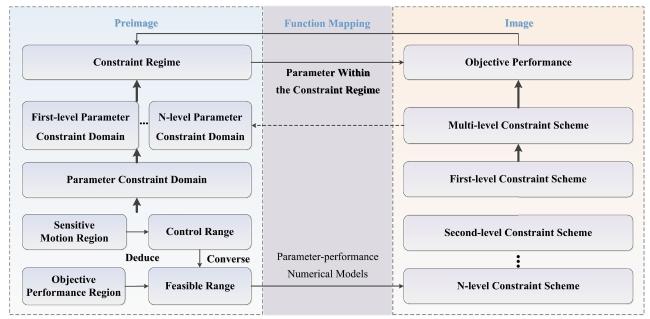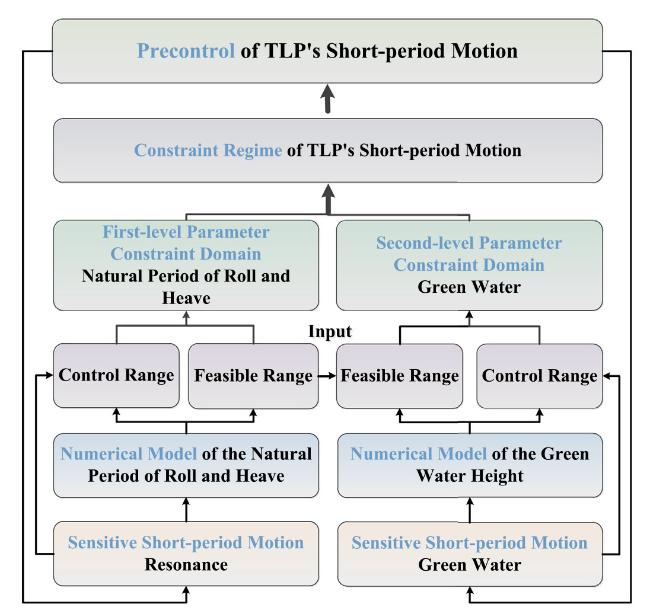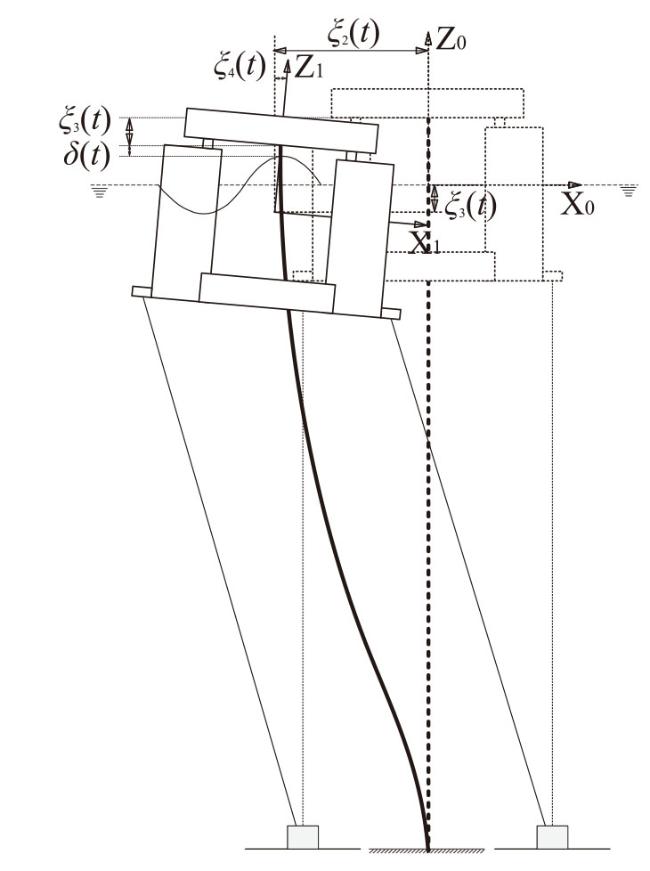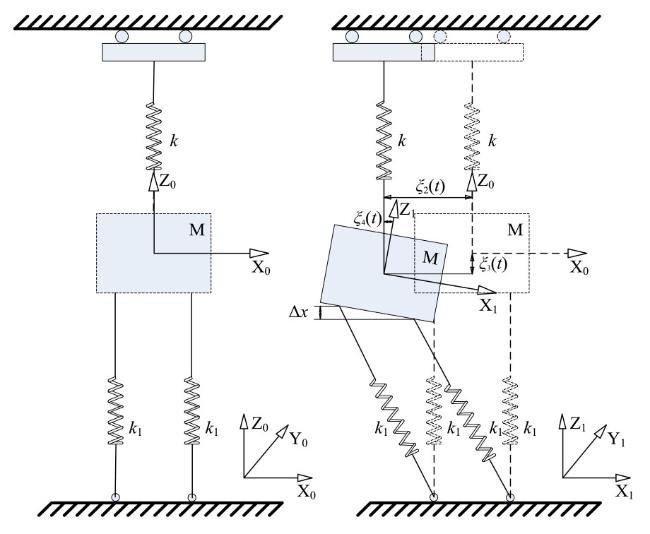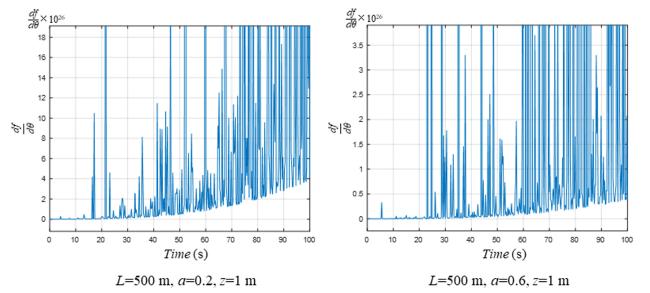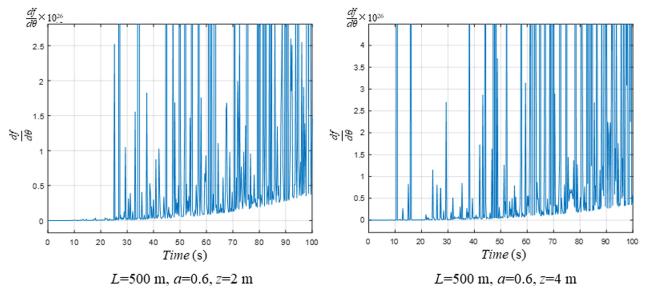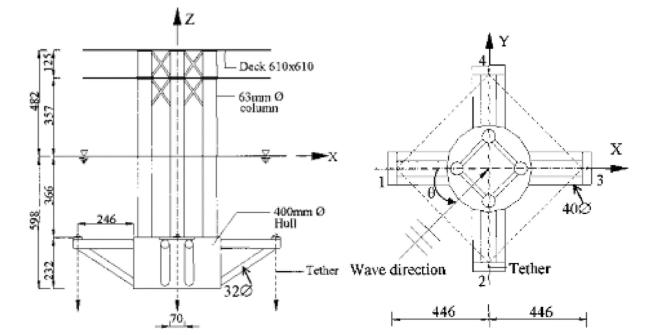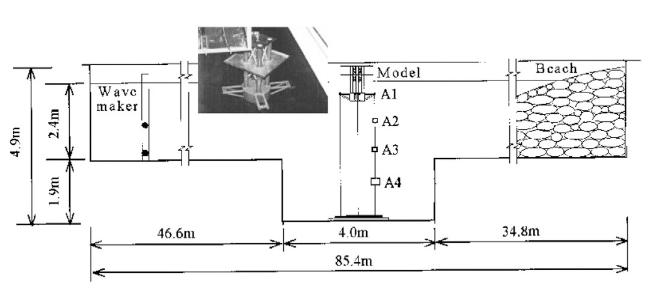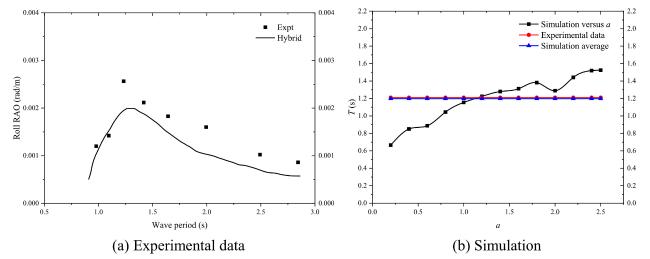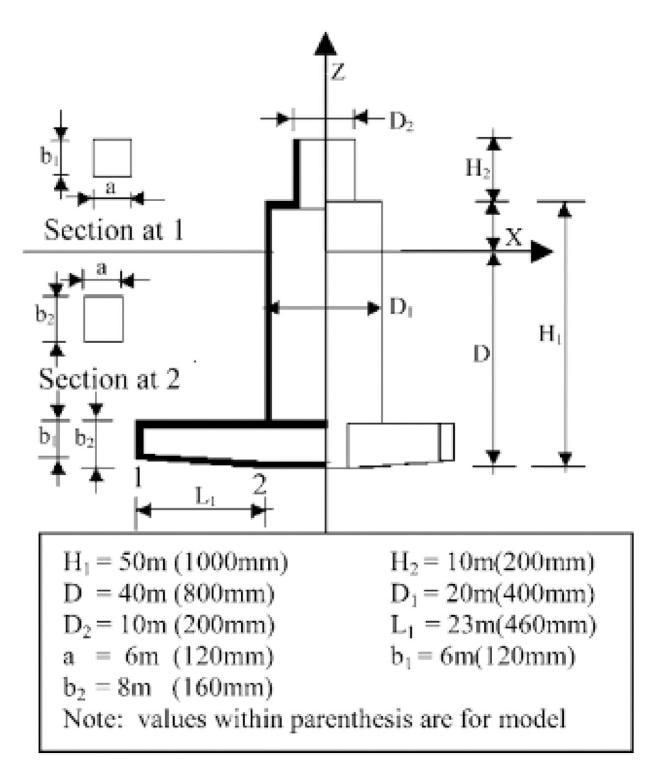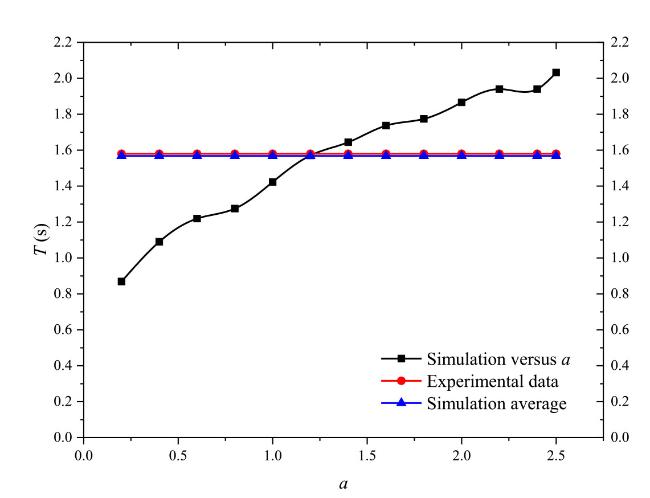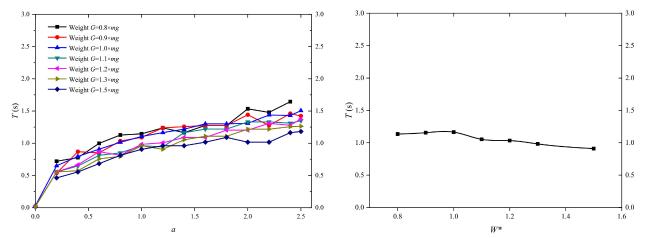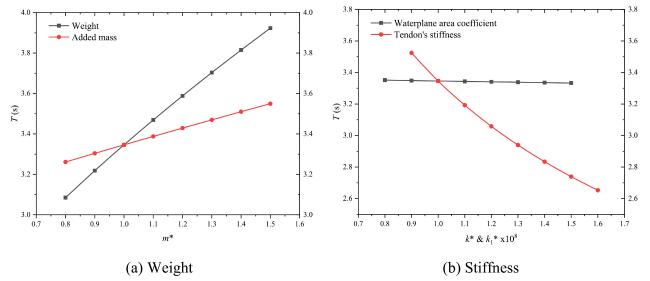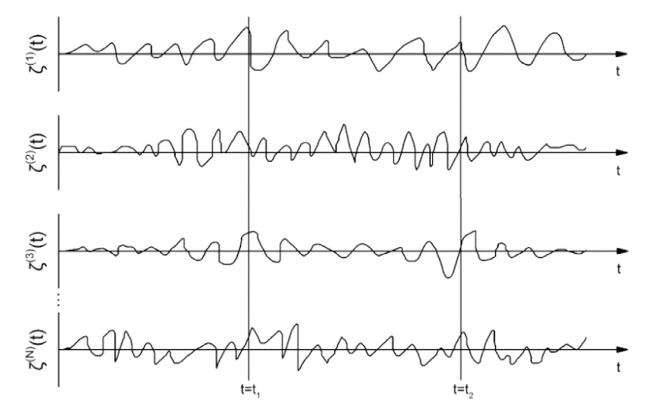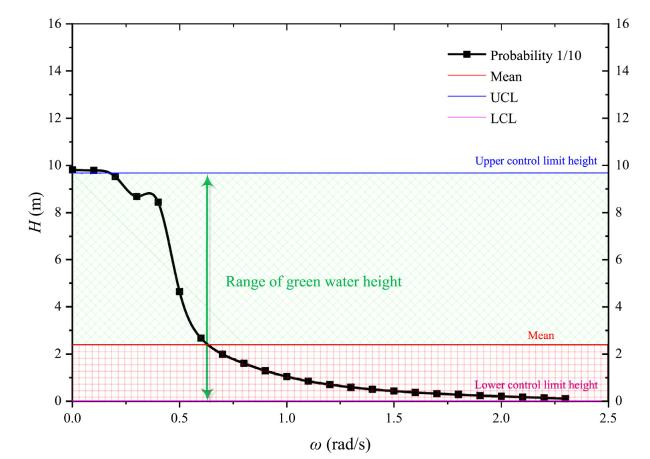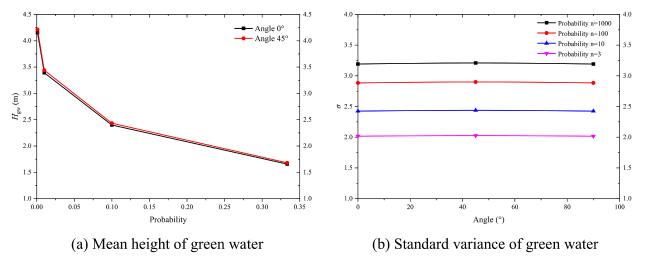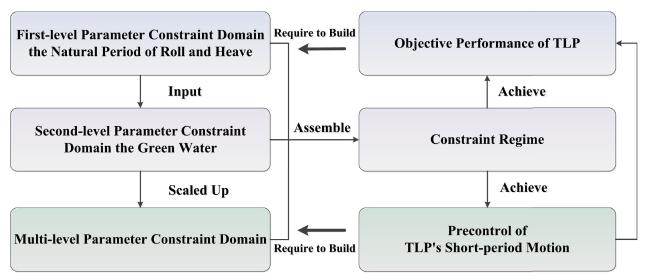1. Introduction
2. Precontrol methodology of TLP's short-period motion
2.1. Precontrol-constrained regime mapping relationship
Fig.1 The logical chain of precontrol. |
2.2. Precontrol procedure of TLP's short-period motion
Fig.2 Workflow of precontrol of TLP's short-period motion. |
3. Multilevel precontrol of TLP's short-period motion
3.1. First-level precontrol based on the natural period of roll and heave model
3.1.1. Model of roll motion
Fig.3 Simplified model of TLP roll motion. |
Fig.4 Simplified model of roll motion. |
3.1.2. Model of the natural period of roll motion
Fig.5 The configuration of the TLP. |
Fig.6 Numerical simulation of the time history of parametric rolling critical points ( L=500 m, z=1 m). |
Fig.7 Numerical simulation of the time history of parametric rolling critical points ( L=500 m, a=0.6). |
Table 1 MOSES TLP prototype and model data [13]. |
| Parameter | Prototype | Model |
|---|---|---|
| Displacement (△) | 6779 t | 38.6 kg |
| Mass (M) | 5022 t | 28.6 kg |
| Diameter of hull | 22.4 m | 400 mm |
| Diameter of columns | 3.5 m | 63 mm |
| Length of tether (Lt) | 202 m | 3.6 m |
| Total tether stiffness (4EA/Lt) | 6.43 × 108 N/m | 205.14 × 103 N/m |
| Natural period of roll | 1.21 s |
Fig.8 Geometric details of the MOSES TLP [13]. |
Fig.9 Experimental setup for the MOSES TLP [13]. |
Fig.10 Comparison of the simulation and experiment for the MOSES TLP. |
Fig.11 Geometric details [3]. |
Table 2 SeaStar TLP prototype and model data [3]. |
| Parameter | Prototype SeaStar 'A' | Model of SeaStar 'A' |
|---|---|---|
| Displacement | 15460 t | 124 kg |
| Mass | 11460 t | 92 kg |
| Length of tether | 175 m | 3.5 m |
| Diameter of columns | 20 m | 400 mm |
| Stress of tethers | 152.73 N/mm2 | 28.37 N/mm2 |
| EA | 1.8333 × 1010 N | 176750 N |
| Roll natural period | 1.58 s | 1.58 s |
Fig.12 Comparison of the simulation and experiment of the SeaStar TLP. |
3.1.3. Sensitivity analysis of principal parameters for the natural period of roll motion
Fig.13 Effects of weight on the natural rolling period. |
Fig.14 Effects of the roll damping coefficient C on the roll natural period. |
3.1.4. Model of the natural period of heave motion
3.1.5. Sensitivity analysis of the principal parameters for the natural period of heave motion
Fig.15 The effects of principal parameters on the natural heaving period. |
3.2. Second-level precontrol based on the green water height model
3.2.1. Mathematical model of TLP's green water height
Fig.16 Definition of the air gap and a demonstration of waves slamming the lower deck of the TLP. |
Fig.17 Random wave high superposition. |
Fig.18 TLP heave motion RAO information. |
Fig.19 Green water height function distributed in the frequency domain with a probability of 1/10. |
3.2.2. Numerical implementation of green water height
Table 3 Information regarding green water obtained with the JONSWAP spectrum and the Pierson-Moskowitz spectrum. |
| Angle/° | Probability | JONSWAP spectrum | Pierson-Moskowitz spectrum | |||
|---|---|---|---|---|---|---|
| Mean/m | σ | Frequency/rad/s | Mean/m | Wind speed/m/s | ||
| 0 | 1/1000 | 4.15 | 3.193 | 0.635 | 4.15 | 14.35 |
| 1/100 | 3.39 | 2.885 | 0.635 | 3.39 | 14.35 | |
| 1/10 | 2.39 | 2.426 | 0.635 | 2.39 | 14.34 | |
| 1/3 | 1.65 | 2.016 | 0.635 | 1.65 | 14.34 | |
| 45 | 1/1000 | 4.21 | 3.209 | 0.635 | 4.21 | 14.35 |
| 1/100 | 3.44 | 2.900 | 0.635 | 3.44 | 14.35 | |
| 1/10 | 2.43 | 2.438 | 0.635 | 2.43 | 14.35 | |
| 1/3 | 1.68 | 2.026 | 0.635 | 1.68 | 14.35 | |
| 90 | 1/1000 | 4.15 | 3.193 | 0.635 | 4.15 | 14.35 |
| 1/100 | 3.39 | 2.885 | 0.635 | 3.39 | 14.35 | |
| 1/10 | 2.40 | 2.426 | 0.635 | 2.40 | 14.35 | |
| 1/3 | 1.65 | 2.016 | 0.635 | 1.65 | 14.35 | |
3.2.3. Green water height calculation
Fig.20 Influence of the wave incident angle and exceeding probability on the mean height and standard variance of green water. |
Fig.21 Constraint regime of the TLP's short-period motion. |
Table 4 Experimental verification of the numerical model of the green water height of the TLP. |
| Items | Numerical Model/Dimensionless Moulded Depth | Experiment/Dimensionless Moulded Depth | Deviation |
|---|---|---|---|
| Air gap δ( t) (without tide effect) | 7.883 m/0.171 | 4.540 m/0.098 | 42% |
| Air gap δ( t) (with tide amendment) | 4.883 m/0.106 | 2.680 m/0.058 | 45% |


